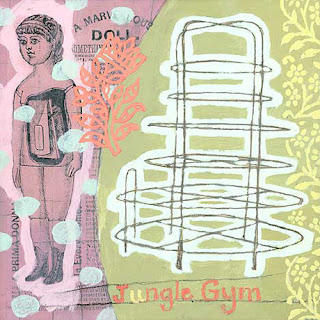I enjoy how she abstracts and flattens natural forms in landscape images. You can see the influence of Dr. Seuss and Hundertwasser, but she definitely has a created a visual vocabulary that is all her own.
She has a great eye for composition and space. There is a great balance of pattern and open space in many of her images. She understands that their often needs to be some "breathing space" in a composition, so the viewer isn't overwhelmed when taking an image in.I thought that her work would make for an interesting investigation into 3d space in art for my last go round with the 3rd graders this year. When I shared her work with them I emphasized that even though an image is abstract it can still have 3d depth. It can still have implied volume in the shapes. Recalling a couple other projects this year, the students were able to identify 3d space in Lindsay's landscapes through overlapping and size change. They were also able to see how some shapes looked 3d because of the tints of colors used to show that one side of the object was receiving more light than the other.
The main images we viewed were a large mural and a small computer generated drawing.
After modeling how you can be inspired by an image and not copy it, I let the classes try it out for themselves. There were many interesting interpretations of Lindsay's style and visual vocabulary. Some stayed closer to her original images than others, but nobody copied one of hers exactly, which I was very excited about.
After drawing out their compostions in pencils, students traced their contour lines with black markers. Then they added color to the drawings with crayons. I emphasized and modeled the use of tints to add visual variety and to make some, if not all of the shapes look 3d.
The classes were unable to finish the project in one hour, so it carried over into the next lesson. Most students need 2 full hours to complete the activity. Those that finished early were tasked with creating another abstract landscape, either by themselves on a smaller scale, or with a partner on a larger scale.
I really love the way so many of these turned out.










